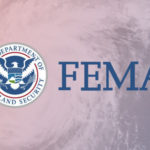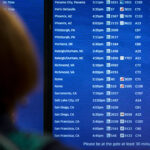What if firefighters had an interactive map that could tell them the most efficient escape routes and the amount of time it would take to find safety while fighting wildfires?
Well, a Fort Lewis College assistant professor is developing an app for that.
“The idea is, if we can map the landscape, understand slope, vegetation, ground surface and where the fire is, ideally, we can provide firefighters with that information ahead of time,” said Mickey Campbell.
“So we can say, here’s a place you can go if things go awry, here’s how to get there and here’s how long it’ll take you.”
Campbell, an upstate New York native, based his doctoral studies at the University of Utah in Salt Lake City around the concept that a more evolved form of fire mapping could vastly improve firefighter safety.
A standard practice before firefighters tackle wildland fires is determining escape routes and safety zones – finding the path of least resistance and lowest risk between their location and safety zones.
But Campbell said these areas can sometimes be hard to identify when working in the field. And often, escape routes can become altered as conditions on the ground change and fires grow.
“Sometimes, there’s a lot of judgment,” Campbell said. “If you’re out in the field, and the safety zone is a half-mile away, it can be hard to see how to get there.”
Campbell’s map would, essentially, function as a Google Maps for firefighters, showing them the best route to get out of harm’s way. But, he said, it’s still a work in progress.
“It seems basic, but it’s something that doesn’t exist, and we’re hoping to get to that point,” Campbell said. “It’s the type of thing we really need to get right, because even if you get the numbers slightly wrong, it can be very dangerous.”
Campbell worked on the project with the University of Utah’s Philip Dennison and Brent Butler, a research forester with the U.S. Forest Service.
Campbell arrived in southwest Colorado in January, taking a job at Fort Lewis College in the geosciences department, but focusing on classes that teach computer mapping technology and geographic information systems, or GIS.
The 31-year-old had a real opportunity to apply mapping technology when the 416 Fire broke out in June, teaming up with emergency responders to provide informational maps that were used to keep the public informed.
The maps, updated every morning, showed the fire boundary north of Durango and identified which areas were under evacuation or pre-evacuation status, even offering the ability to search an exact address.
Campbell spent the next three weeks updating the maps every morning with information provided by the Type 1 Rocky Mountain Incident Management Team and La Plata County emergency officials.
“Our goal was to have one central location where everyone could go and find all the daily information they needed,” Campbell said.
The maps were highly effective, recording about 26,000 views for the entirety of the 416 Fire, and about 1,000 views a day during the height of the fire.
Butch Knowlton, director of La Plata County’s Office of Emergency Management, said a strong working relationship between federal, state and local agencies made for better communication processes to the public.
Each night, after firefighting efforts, crews would meet up for a planning meeting to predict fire behavior and determine what residential areas may need to be evacuated.
Those details were funneled to Campbell the next day.
“Information that went out the door was excellent, and that really made a big difference,” Knowlton said. “People were really, really thankful and appreciative of the mapping process we had and the quick information we were provided.”
For now, outside of teaching duties, Campbell continues to work on his app.
He hopes to work with a local firefighting crew this spring to test out some GPS tracking experiments.
“Nowadays, everything is on our phone; everything is mappable,” Campbell said. “We’re moving away from the days where we think of maps as big posters hanging in fourth-grade classrooms. Maps are such an active component of our day-to-day lives, and we’re often interacting without thinking we’re looking at maps.”
Was this article valuable?
Here are more articles you may enjoy.

 Acting FEMA Chief Is Ousted After Less Than 4 Months
Acting FEMA Chief Is Ousted After Less Than 4 Months  Newark Radar Failure Left Controllers Blind for 90 Seconds
Newark Radar Failure Left Controllers Blind for 90 Seconds  Duffy Says ‘Several Weeks’ of Flight Cuts Needed at Newark
Duffy Says ‘Several Weeks’ of Flight Cuts Needed at Newark  CFPB Drops Biden-Era Lawsuit Against Walmart, Fintech Partner
CFPB Drops Biden-Era Lawsuit Against Walmart, Fintech Partner 